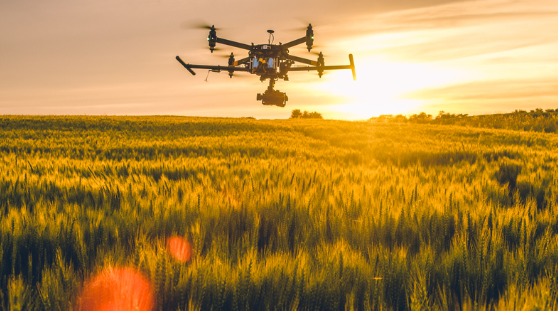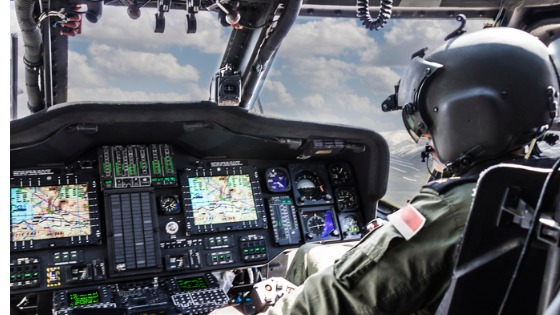On this Memorial Day, Woz U wants to honor the U.S. men and women who sacrificed their lives for our country.
We also want to thank military personnel and their families for their service.
Whether on a remote base or in the middle of a conflict, soldiers band together to protect our national interests. And, we thank you.
Behind the soldiers are men and women developing the best technology to support those troops.
Their efforts have not only advanced military technology, but they have also shaped our culture.
Divide military technology into these four categories:
- Offensive. Weapons designed to deter attacks
- Defensive. Weapons to protect against offensive attacks
- Transportation. Logistics of moving soldiers, weapons and supplies
- Communications. Technology to coordinate or detect military movement
As a society, we are more aware of the offensive and defensive technologies, but transportation and communications technology have had more of an impact on our daily lives.
The History of Military Technology
The first evidence of war technology dates back to about 8000 BCE when the stone walls of Jericho were built.
The walls were at least 13-feet high with watchtowers that were 28-feet tall. This protected the settlement and its water supply from intruders.
From the stone walls of Jericho until about 400 CE, military technology was concerned with the individual soldier. Armies needed weaponry such as swords, shields, and spears.
Men needed protection, so they made helmets and body armor. Even when horses became a part of war, the focus still revolved around the individual.
Catapults and Greek fire were added to the matériel of warfare, but there were no significant leaps forward until the 14th century.
During the 1300s, gunpowder reached the West.
Gunpowder was a game-changing military technology. Cannons became a part of siege warfare, and the advent of muskets by the 16th century changed warfare forever.
Military technology grew rapidly with machine guns emerging during the American Civil War. By World War I, military technology focused on war mechanization.
How Military Technology Has Changed Over Time
For centuries, military equipment technology focused on weaponry. However, by World War I, the troops needed transportation and communication advances.
Supply lines spread across oceans, and communications became crucial to the movement of both troops and supplies. Using soldiers to carry messages was no longer viable.
Equipment needed to be re-routed quickly when battle lines changed. The onset of modern warfare eventually saw the positive effects of military technology in our lives.
How Technology Has Shaped Our Lives
Can you imagine life without the internet or duct tape? How about penicillin or superglue? These are just a few military innovations that have become a part of our lives.
Duct Tape
Duct tape was invented to protect equipment, vehicles, and weapons against water and dirt.
Although what we know today as duct tape is a far cry from the rubber adhesive applied to duck cloth.
During World War II, it was perfect for sealing ammunition boxes and patching tires.
Internet
Long before anyone heard of the internet, the idea of a network to connect all government research labs was proposed.
In the 1950s, scientists wanted to share information using developing computer technologies.
In 1977, a scientific network known as the Advanced Research Projects Agency Network (ARPANET) was born.
The technology with its TCP/IP became the foundation for what we know as the internet.
Other military technologies that had positive effects include canned foods, microwave ovens, and freeze-drying foods.
Who knows what future military technology will design…
How Military Tech Changed IT
The technical innovations of the military have had a significant impact on the IT industry.
From walkie-talkies to drones, military equipment has worked its way into the IT industry.
Computers
Computers first used punch cards and hours of processing to deliver solutions. During World War II, Colossus.
A programmable electronic computer helped decipher encrypted German messages.
This event started the move towards the modern digital computer that we carry in our pockets.
GPS
The government started sending satellites to orbit the earth after World War II. These space-based navigation systems:
- Contributed to soldier safety on battlefields
- Helped identify military targets
- Improved mapping
We use GPS technology every day, whether it is onboard car navigation or smartphone location services.
Drones
Drones, known as unmanned aerial vehicles (UAV), collected information on battlefields or carried out specific military operations.

The first UAV launched in 1849 when Austria sent bomb-filled balloons to Venice.
Today, the military and non-military use drones. Consumer drone usage increased so much that some asked the FAA to regulate operations.
Digital Camera
Digital camera technology captured high-resolution aerial images. The military continued to work on the technology during and after the Cold War.
In the 1970s, Steven Sasson created the first self-contained digital camera. It has taken years for the technology to progress to what we know today as digital photography.
Military technology has given us radar, night vision goggles, and aviator sunglasses. Its ongoing research and development efforts are sure to result in more innovations in the IT industry.
Expressing Gratitude This Memorial Day
To the amazing men and women who worked behind the scenes to deliver technology to protect and defend our country, thank you.
Not only did you protect our soldiers, but you contributed to the quality of life for millions of Americans.
On this Memorial Day, everyone here at Woz U want all Americans to remember to never take for granted the liberties we enjoy because they were earned through the sacrifices of our armed forces.





